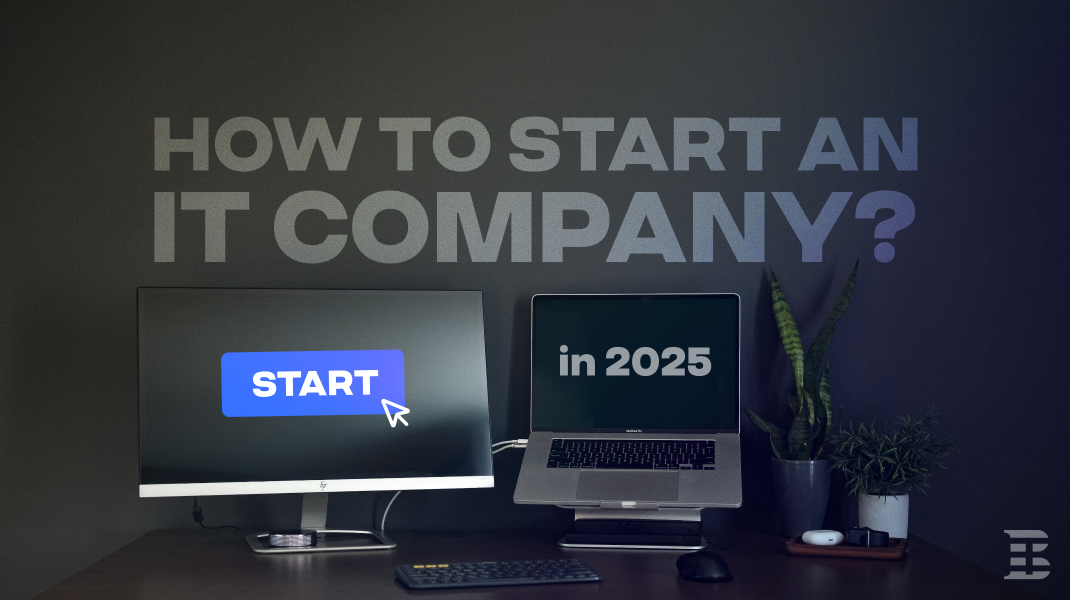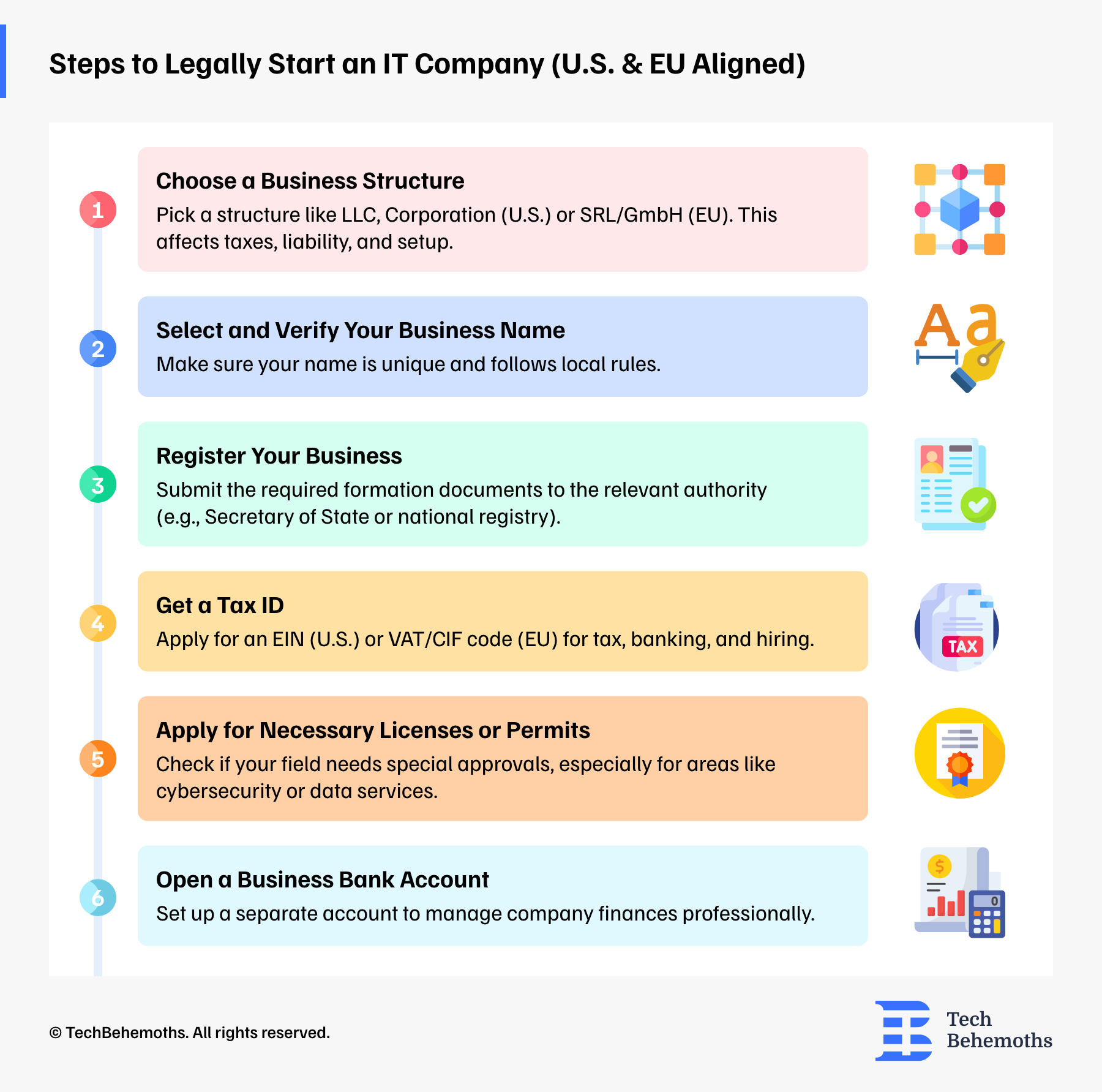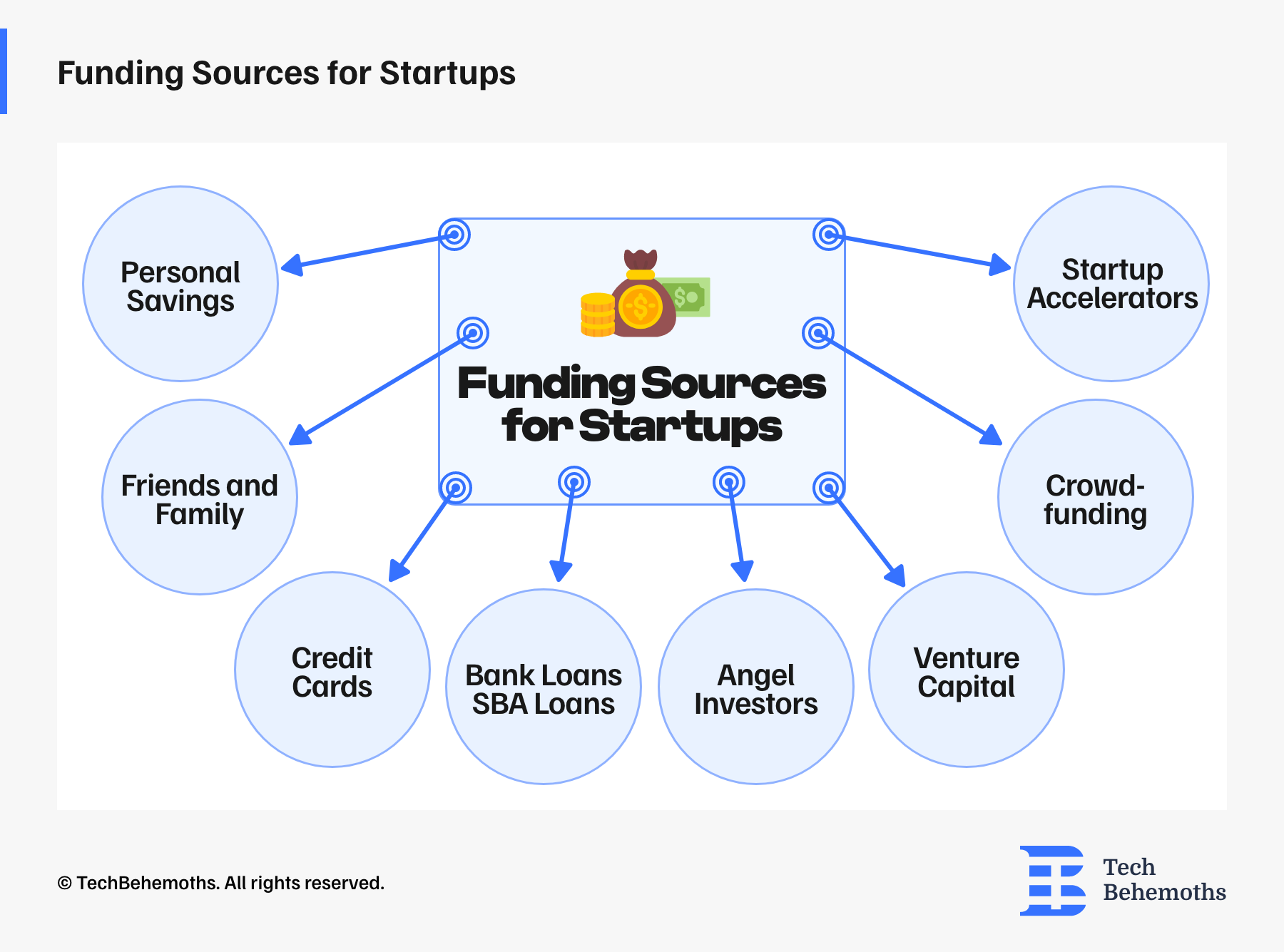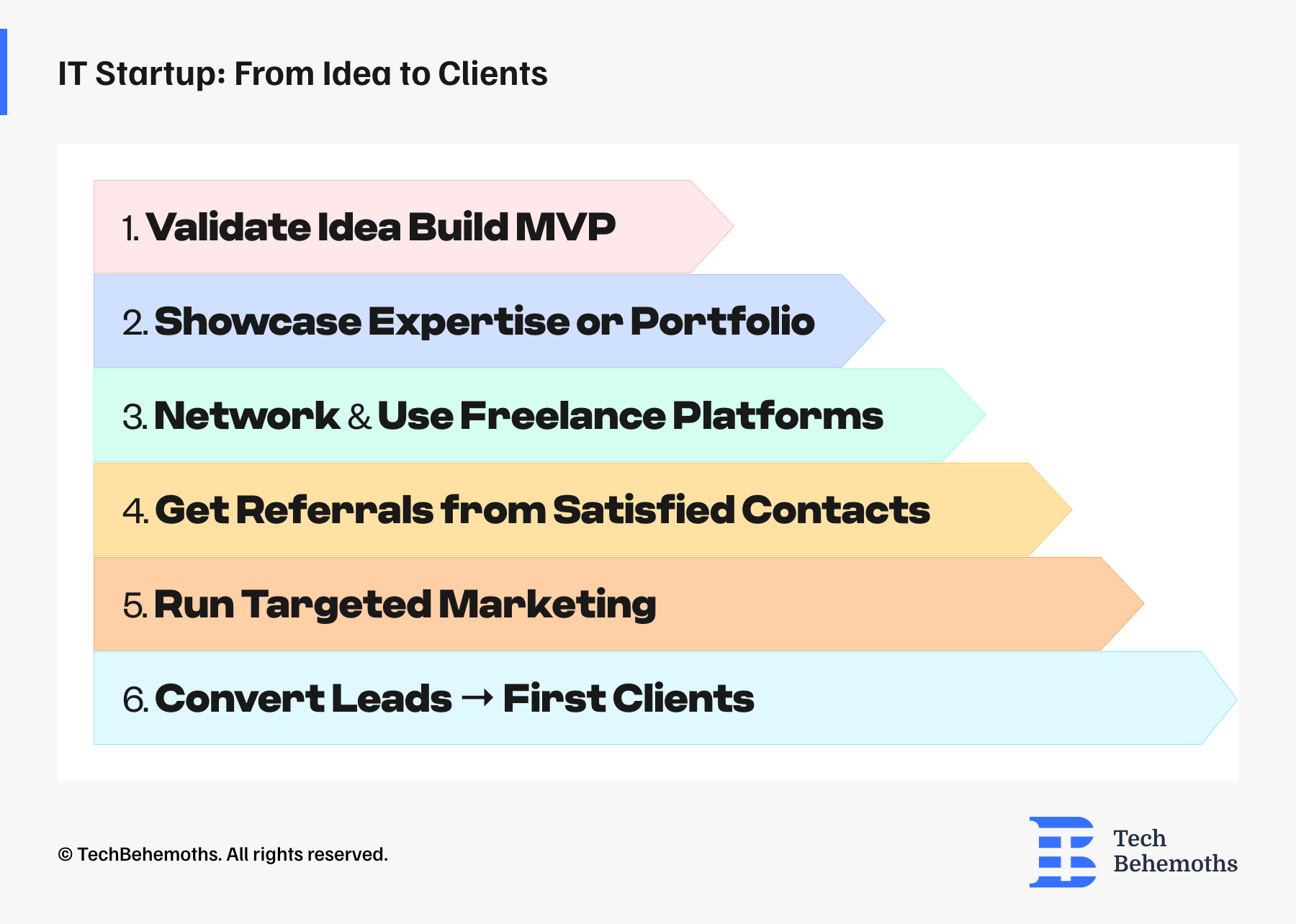How to Start an IT Company in 2025? (Step by Step)

Summary
- Starting an IT company in 2025 requires more than just a great idea or tech skills - it demands strategic thinking, adaptability, and a strong foundation.
- Success comes from aligning market needs with the right business model, legal clarity, and smart infrastructure choices.
- Key steps include thorough market research, choosing between SaaS or service-based models, building a lean MVP, and leveraging tools that support scalability and efficiency.
- Early traction depends on visibility, client trust, and platforms like TechBehemoths that connect startups with real opportunities.
- Launch smart, scale intentionally, and build for long-term impact.
Thinking about starting your own IT company in 2025? Whether you’re full of ideas or just testing the waters, taking the first step can seem overwhelming – but it doesn’t have to be. With the right plan, a little courage, and a clear direction, you can build something meaningful from scratch.
In this guide, we’ll walk you through the key steps: choosing your niche, developing a plan of action, getting legally registered, and setting up everything from basic infrastructure and equipment to your first clients. This is part of an ongoing series where we’ll take a step-by-step look at everything so you can focus on creating a business that actually works – for you.
What Are the First Steps to Starting an IT Company?
Market Research and Niche Selection
Both market research and niche exploration are the first steps you need to take when you want to start an IT company. You can't start any business, regardless of industry, without them. Market research blends consumer behavior and economic trends to confirm and improve your business idea.
What benefits does market research bring?
-
Understanding Customer Needs
You need to identify your buyer persona. By creating the ideal profile for your customers, you are ready to offer them the ideal product for their needs. Continue to develop your product/service based on what features they value the most, which needs are not being met, and what changes have occurred in their expectations.
-
Identify market trends
Informing about emerging trends allows you to adapt your product offering and stay ahead of this competitive industry. One key point to mention is that 75% of young tech professionals between 18 and 25 have started to adopt AI tools.
-
Assessing Competitor Landscape
Analyzing competitors' product offerings, pricing strategies, marketing tactics, customer reviews, and market positioning helps you understand your rivals' strengths and weaknesses, identify market opportunities, and develop strategies to differentiate your products and services.
-
Risk Mitigation
By conducting market research, IT companies can identify and respond to potential problems or risks that may arise in the market landscape. This allows for risk mitigation, saving the company significant stress, financial resources, and time, thus ensuring a more resilient and adaptable business strategy.
Tech Business Model Selection
Depending on your goal, your expertise in the field, and your available resources, there are several types of IT business models that you could implement for your business idea:
|
Model |
Description |
Examples |
|---|---|---|
|
Service-Based |
Customized IT services such as development, consulting, or support |
Web agencies, IT consultancies |
|
Product-Based |
One-off sale of software or digital tools |
Antivirus software, design tools |
|
SaaS |
Subscription-based software accessed online |
Notion, Dropbox, Slack |
|
PaaS |
A platform for developers to build applications without managing infrastructure |
Heroku, Google App Engine |
|
IaaS |
Cloud-based infrastructure (servers, storage, etc.) |
|
|
Marketplace |
A platform that connects service providers with customers |
Fiverr, Upwork |
|
Freemium |
Freebase product with paid premium features |
Trello, Canva |
Once you choose your business model, you will have a clear vision of how your business should develop. Analyze the examples of other companies carefully and take into account all the essential factors, such as budget, costs, and sales cycle length, because they directly influence the sustainability and scalability of your business.
Do I Need a Business Plan for my IT Startup?
Yes, you definitely need a Business Plan, especially if it's a startup and you're in the early stages. According to an article in Harvard Business Review, entrepreneurs who develop formal plans are 16% more likely to achieve viability than those who don't.
However, having a plan doesn't guarantee rapid and significant growth; the quality of the content, its concreteness and detail, how realistic its assumptions and projections are, and whether the product or service offered is truly revolutionary also matter.
There is no single mandatory format for a business plan, but certain key elements are essential and common to most companies, including IT businesses. A business plan for an IT company outlines its mission, team, and location, details the products or services offered, analyzes the target market and competition, defines marketing strategies to attract and retain customers, and includes financial projections, goals, and potential funding needs. It also covers aspects like pricing, R&D, proprietary technologies, and distribution channels.
The value of business planning really depends on how smart you are at planning and what kind of approach you take. A good business plan instills confidence, both for you and for potential stakeholders.
Investor-ready vs solo startup plans
For startups, a well-crafted business plan is also essential for attracting potential lenders and investors.
There are two types of business plans commonly used:
- Traditional
- Lean startup
Traditional is a detailed and comprehensive document, often dozens of pages long, commonly used for securing funding from traditional sources. While Lean Startup Business Plan is a streamlined and flexible format, usually one page, that Summarizes only the most important aspects of the business Ideal for startups that need speed, simplicity, and the ability to revise frequently.

According to the U.S. Small Business Administration (SBA), the traditional business plan is the more common of the two.
How Do I Legally Register an IT Company?
In each country, the process of registering a company is carried out differently, lasts differently, and involves variable costs. Usually, accurate information regarding the stages of registering your company can be easily found online on various regional portals, where all the steps are explained in detail.
The process of legally registering an IT company in the USA is similar to the process of setting up a company in the EU (e.g. in Romania, Germany, or France). However, there are differences in terminology, institutions, and sometimes in the logical order of the steps. In the image below you can find a common, adjusted version valid for both the USA and most EU countries.
To legally register an IT company, follow these essential steps:

If you plan to operate outside of Europe or the United States, the registration process will vary depending on your country's laws and regulations.
What Technical Infrastructure Do I Need?
To start an IT company you will need an infrastructure that includes computing, network, workstation, data platform and edge capabilities. Their specifics differ depending on what IT activity you have chosen to carry out for your startup. Meanwhile, traditional infrastructure mainly refers to hardware, data centers, and servers that are configured, managed, and maintained manually.
|
Categories |
Platforms/Tool |
Description |
Startup priority |
|---|---|---|---|
|
Hosting/servers |
Shared Hosting |
Shared hosting offers a cost-effective solution for hosting websites or internal tools where high performance isn’t critical. Keep in mind that multiple clients share a single server’s resources, making it ideal when you’re just starting out or have a low-traffic site requiring minimal setup and maintenance. Popular providers include: Bluehost, HostGator, Hostinger, SiteGround. |
Company-Specific |
|
Virtual Private Servers (VPS) |
It’s a step up from shared hosting, giving your website or app dedicated resources on a shared server. This option balances cost and performance, making it great for growing sites or custom apps needing more control and reliability. Popular providers might include: DigitalOcean, Linode, Vultr, InMotion Hosting. |
Company-Specific |
|
|
Dedicated Servers |
It’s like renting an entire server just for your needs, offering top performance and full control. Perfect for high-traffic client websites or resource-heavy apps where speed and security are critical. Popular providers might include: OVH, SiteGround, Liquid Web, InMotion Hosting. |
Company-Specific |
|
|
Cloud Hosting |
Cloud hosting delivers a scalable, flexible solution for websites or applications, often used for high-load apps requiring robust performance. It distributes resources across virtual servers in the cloud, ensuring high availability and rapid scalability, though costs are typically higher, pushing costs into the $100–$1,000+/month range based on resource demands. Popular providers include: AWS EC2, Google Cloud Compute Engine, Microsoft Azure, DigitalOcean. |
Optional |
|
|
Cloud Infrastructure Services |
Compute Services |
Provides scalable processing power for your apps, ensuring flexibility and performance for growing IT products. Most popular providers: AWS (EC2, Lambda), Microsoft Azure (Virtual Machines, Functions), Google Cloud (Compute Engine, Cloud Functions) |
Optional |
|
Cloud Storage Services |
Used for storing frequently accessed files, large objects or backups in a secure location. Most popular options: AWS (S3, EBS), Google Cloud (Cloud Storage), Microsoft Azure (Blob Storage), IBM Cloud (Object Storage) |
Nice-to-have |
|
|
Content Delivery Networks (CDNs) |
CDNs cache your most accessed resources in different geographical zones and serve them from the zones that are most close to your users as opposed to loading each resource from the origin server location which might be very far from users. Most popular providers: Amazon CloudFront, Google Cloud CDN, Microsoft Azure CDN, Cloudflare |
Nice-to-have |
|
|
Security and Protection Services |
Protects your website from attacks and ensures reliable, fast access for users. Most popular solutions: AWS (IAM, Shield), Microsoft Azure (Defender), Google Cloud (Security Command Center), Cloudflare (WAF). |
Must-have |
|
|
Caching and Database Services |
Ensures your most accessed data is stored in fast accessible locations for easier access and for preventing overloading your main servers. Popular choices: AWS (ElastiCache, DynamoDB), Google Cloud (Spanner), Microsoft Azure (Cosmos DB), Redis Labs (Redis Enterprise) |
Nice-to-have |
|
|
Dev Tools |
Version control system |
Version control, code collaboration, CI/CD & DevOps tools; Ubiquitous de facto options are: GitHub/Bitbucket/GitLab |
Must-have |
|
Application containerization |
Nice-to-have |
||
|
Container orchestration for scalable applications |
Optional |
||
|
Project Management |
Simple, visual task management |
Must-have |
|
|
Project management for software teams |
Nice-to-have |
||
|
Communication |
Internal chat for teams |
Nice-to-have |
|
|
Video conferencing and online meetings |
Nice-to-have |
||
|
Design Tools |
Collaborative, online UI/UX design |
Must-have |
|
|
Interface design and rapid prototyping |
Nice-to-have |
||
|
CRM & Business |
Free CRM for startups |
Must-have |
|
|
Workspace for notes, tasks, databases |
Nice-to-have |
||
|
Complete suite for company management |
Optional |
Choose the tools you need wisely, and don't overuse them. Too many applications and tools can disrupt your workflow or even add additional costs.
Of course, in addition to the tools, you'll also need a basic physical infrastructure, which includes:
-
Laptops/PCs - at least 1 per member, min 16GB RAM, SSD.
-
Accessories - ergonomic mouse, keyboard, docking station, etc.
-
High-speed Internet - fiber-optic connection, min 100 Mbps (ideally >300 Mbps)
-
Quiet workspace - equipped with power access/UPS, sturdy desks, ergonomic chairs, etc.
Once the IT landscape allows, it has become a practice for IT companies to reduce office space costs by introducing a remote or hybrid working model.
Be guided by your priorities, as you will cover more infrastructure, equipment, and facilities needs along your business activity path.
How Do I Finance My IT Startup?
You can fund your IT startup through bootstrapping (using personal savings), angel investors (early-stage private funders), or venture capital (for scalable ideas). Keep in mind that all of these are created differently, and the best decision to make will ultimately depend on your unique goals and strategies.
Explore Funding Options
When looking for funding for a startup, consider these three key factors:
-
The stage you are in your startup (idea, MVP, or growth)
-
The industry you are entering (some sectors like SaaS, fintech, or AI are more attractive to investors)
-
What funders are looking for - a scalable idea, early traction, a strong team, and a clear monetization plan.
Matching the right type of funding to the stage and industry you are in increases your chances of success.
Here are some of the most common sources of funding for startups that can help you start your IT company: SBA Loans, credit cards, short-term loans, friends and family, venture capital, angel investors.

Is it important to build an MVP when setting up an IT Company?
When launching an IT company, it’s essential to build a Lean Minimum Viable Product (MVP) before investing heavily in development.
What is an MVP? It means creating a basic, functional version of your software or platform that solves a core problem for your target users – such as a web application, SaaS tool, or mobile app – using minimal time and resources.
Eric Ries, who introduced this concept, defines the MVP as:
“The version of a new product which allows a team to collect the maximum amount of validated learning about customers with the least effort.”
- Eric Ries, an entrepreneur and author of the book The Lean Startup (2011)
The goal of an MVP is to validate your idea in the real world. The way it works starts with collecting early feedback and fine-tuning the product according to identified user needs. So, whether you’re building a B2B platform, a developer tool, or a consumer-facing tech product, launching a Lean MVP helps reduce risk and ensures that you’re building something the market really wants.
How Can I Get My First Clients or Projects?
To get your first clients (example for a European IT company), start by clearly defining who you want to work with and understanding their needs, as we’ve discovered before in this article, you need to create your buyer persona.
Secondly, use your network, social media, and freelancing platforms to reach out to your potential clients, such as LinkedIn, Instagram, and Facebook.
You’ll also need a strong online presence with a professional website and useful content that demonstrates your expertise. Publish technical blogs, case studies, and tutorials to showcase your expertise and improve SEO. Build a mailing list and nurture leads with newsletters or updates.
Another important point is to offer some value from the start, such as free advice or audits to gain trust. Attend industry events and collaborate with related companies for referrals. Use TechBehemoths to gain credibility and early clients. Collaborate with designers, agencies, or consultants for cross-referrals.
Once you land your first project, focus on providing outstanding service to build your reputation and attract more clients through word-of-mouth. Identify marketing strategies, define their associated marketing campaigns, and find the right digital distribution channels that align with the results you want to achieve for your IT service demand.
From Concept to Client Success - The IT Startup Funnel
Finding clients doesn’t have to be hard — or expensive. TechBehemoths lets you list your company for free. The platform connects real projects with 55,523 IT companies from 143 countries and 7,277 cities as of today and continues to reduce the gap between the demand and supply of IT service providers.
Conclusion
Launching an IT company in 2025 requires more than just talent and technical skills - it requires strategic planning, minimal legal knowledge, and a solid customer acquisition strategy. By now, you should have a clear roadmap to take your idea from concept to operation, equipped with the essentials to build a sustainable tech business in today's competitive, ever-changing IT industry.
Are you ready to take the leap? Start by creating your company profile on TechBehemoths.com, where thousands of clients are actively looking for IT service providers. Connect, grow, and position your startup where it matters most - in front of the right audience.
Related Questions & Answers
Which country is currently the top startup hub in Europe?
How much does it typically cost to start an IT company today?
Are certain countries especially startup-friendly in 2025?
How important is legal protection like NDAs and IP for tech startups?
What percentage of IT startups fail, and why is this so important to know before launching?
